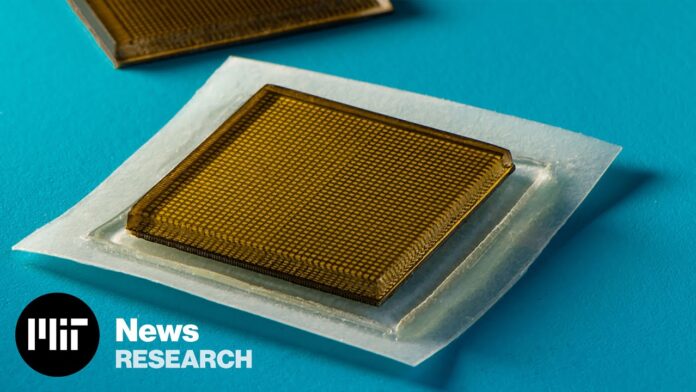
Conventional ultrasounds require you to go to a clinic to monitor the state of your internal organs. But what if you could wear an ultrasound patch as easy to apply as a Band-Aid? That’s what engineers at the Massachusetts Institute of Technology (MIT) have developed. When applied to various parts of the body, one or more of these stickers can detect signs of disease in internal organs and find and track tumors.
Xuanhe Zhao, Professor of Mechanical Engineering at MIT, in an MIT news release states: “We envision a few patches adhered to different locations on the body, and the patches would communicate with your cellphone, where AI algorithms would analyze the images on demand.”
This could mark the dawn of a new era of wearable imaging. Professor Zhao notes “With a few patches on your body, you could see your internal organs.” When applied to volunteers, the stickers produced live, high-resolution images of major blood vessels, the heart, lungs and stomach. The stickers performed well even when the volunteers were physically active. They remained attached to the skin on various parts of the body from the neck to the abdomen and arms producing clear images over 48 hours. The current version of the sticky patch is not wireless, and as of yet there is no smartphone app, but both of these innovations are in the works.
Current ultrasounds use a probe or transducer pressed against skin coated with a liquid gel to send sound waves into the body. These echo off internal structures which then are translated into images. Having had numerous ultrasounds after COVID-19 infected my heart four years ago, I can tell you that 45 minutes to an hour of this type of examination, although not invasive, is extremely uncomfortable.
A wearable imaging tool would be so much better. The one invented at MIT produces high-resolution images. The patch is made up of a stretchy adhesive layer with an underlying rigid array of transducers. MIT graduate student, Chonghe Wang, who worked on the project notes that the design “enables the device to conform to the skin while maintaining the relative location of the transducers.”
The stretchy adhesive consists of two thin layers of elastomer (the bottom has a sticky adhesive) separated by a solid hydrogel designed to transmit sound waves. The elastomer prevents the hydrogel from drying out which is a critical innovation because normal ultrasounds require constant application of gel to transmit images. The entire sticker is approximately 2 square centimetres and 3 millimetres in thickness.
Xiaoyu Chen, one of the co-authors of a paper the MIT team wrote and published in a recent edition of the journal, Science Advances, notes that the ability to obtain images during physical activity would be a major advance in ultrasound diagnostics. “We might be able to capture the moment in a workout before overuse and stop before muscles become sore. We do not know when that moment might be yet, but now we can provide imaging data that experts can interpret.”
Professor Zhao imagines doctors using a box of stickers designed for different body parts as the end product and describes their invention as “a breakthrough in wearable devices and medical imaging.”








